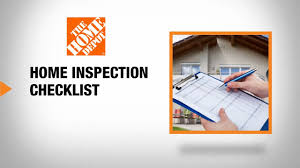Introduction
Homeownership is a significant milestone, but it comes with responsibilities. One crucial aspect often overlooked is regular home inspections. In this guide, we’ll explore the importance of home inspections and provide a comprehensive checklist to identify improvement needs, ensuring your home remains a safe and secure haven.
Before diving into the checklist, let’s understand why home inspections are vital. Many homeowners only consider inspections when buying or selling a property, but regular checks can uncover potential issues, saving you from expensive repairs down the road.
Why Home Inspections Are Vital
Ensuring Safety
The safety of your family is paramount. A home inspection helps identify any safety hazards, from faulty wiring to structural weaknesses, ensuring your home is a secure environment.
Identifying Potential Issues
Home inspections go beyond the obvious. They delve into the hidden corners of your home, uncovering issues such as water damage, pest infestations, or mold growth that might not be immediately visible.
Preventing Future Costly Repairs
Addressing problems early on can prevent them from escalating into major, costly repairs. A small leak detected during an inspection can save you from dealing with a flooded basement later.
Getting Started: Preparing for a Home Inspection
Before the inspector arrives, it’s essential to prepare your home for a thorough examination.
Clearing Access Points
Ensure easy access to all areas of your home, including the attic, basement, and crawl spaces. This allows the inspector to assess every inch of the property.
Gathering Necessary Documents
Have essential documents, such as maintenance records and warranties, ready for the inspector. This information can provide valuable insights into the history of your home.
Informing Occupants
If you have tenants or family members living in the house, inform them about the inspection to avoid any surprises.
Exterior Inspection
The exterior of your home is its first line of defense against the elements. A comprehensive inspection covers various aspects.
Roof and Gutters
Inspect the roof for damaged shingles or signs of wear. Clear gutters of debris to prevent water damage and ensure proper drainage.
Siding and Foundation
Check for cracks or damage to the siding and foundation. These can indicate structural issues that need immediate attention.
Landscaping and Drainage
Evaluate the landscaping for potential drainage issues. Poor drainage can lead to water damage and compromise the integrity of your home’s foundation.
Interior Inspection
Moving indoors, focus on the key systems that keep your home running smoothly.
Plumbing System
Check for leaks, drips, or water stains around plumbing fixtures. Ensure all faucets and drains are working correctly.
Electrical System
Inspect the electrical panel for any signs of overheating or wiring issues. Ensure all outlets and switches are functioning properly.
Heating, Ventilation, and Air Conditioning (HVAC)
Test the HVAC system to ensure it’s heating and cooling effectively. Replace filters regularly to maintain optimal performance.
Walls, Ceilings, and Floors
Look for cracks, water stains, or sagging in walls and ceilings. Check for unevenness or damage to the flooring.
Appliances and Fixtures
Checking Appliances
Inspect kitchen and laundry appliances for any malfunctions or signs of wear. Ensure they are all in good working order.
Examining Fixtures
Check all lighting fixtures, faucets, and other fixtures for proper functionality. Replace any bulbs or parts as needed.
Common Issues to Look For
During the inspection, keep an eye out for these common issues that could be red flags.
Water Damage
Water stains, mold, or a musty odor can indicate water damage. Identify and address the source promptly.
Structural Issues
Cracks in walls, uneven floors, or doors that don’t close properly may signify structural problems.
Electrical Problems
Flickering lights, tripped breakers, or exposed wiring need immediate attention from a qualified electrician.
Pest Infestations
Look for signs of pests, such as droppings or gnaw marks. Address pest issues promptly to prevent further damage.
DIY Home Inspections: What You Can Check Yourself
While a professional inspection is crucial, homeowners can conduct their own preliminary checks.
Simple Checks for Homeowners
Regularly inspect your home for any changes or issues. Keep an eye out for new cracks, water stains, or unusual odors.
Signs of Potential Problems
Be vigilant about signs that may indicate potential problems. Addressing issues early can save you time and money in the long run.
Documenting Findings: The Inspection Report
A detailed inspection report is a valuable resource for understanding your home’s condition.
Importance of a Detailed Report
A thorough report provides a comprehensive overview of the inspection findings, helping you prioritize repairs and improvements.
How to Understand the Report
If you’re not familiar with construction jargon, don’t worry. A good inspector will explain their findings in layman’s terms, ensuring you grasp the necessary information.
Addressing Identified Issues: Repairs and Improvements
Once the inspection is complete, it’s time to address any identified issues.
Hiring Professionals
For major repairs or issues, hire qualified professionals. They have the expertise to handle complex problems effectively.
Budgeting for Repairs
Create a budget for repairs based on the inspector’s recommendations. Prioritize essential repairs to maintain the integrity of your home.
Negotiating with Sellers
If you’re buying a home, use the inspection report as a negotiating tool. Sellers may be willing to address certain issues or adjust the sale price accordingly.
Future-Proofing Your Home
Regular maintenance and long-term planning can help future-proof your home.
Regular Maintenance
Stay proactive with regular maintenance tasks. Clean gutters, service the HVAC system, and address any minor issues promptly.
Long-Term Planning
Consider the long-term needs of your home. Plan for renovations or upgrades that enhance both functionality and value.
Benefits of a Thorough Home Inspection
Understanding the benefits of a thorough home inspection is crucial for both buyers and current homeowners.
Peace of Mind for Buyers
For buyers, a comprehensive inspection provides peace of mind, ensuring they are making a sound investment.
Increased Property Value
Regular inspections and maintenance contribute to increased property value over time.
Avoiding Unforeseen Issues
By addressing potential problems early, homeowners can avoid unexpected and costly issues in the future.
Choosing the Right Home Inspector
Not all inspectors are created equal. Here’s how to find the right professional for the job.
Qualifications and Certifications
Ensure the inspector is qualified and certified. Look for memberships in reputable associations.
Reviews and Recommendations
Check reviews and seek recommendations from trusted sources. A good inspector will have a track record of satisfied clients.
Conclusion
A thorough home inspection is a crucial aspect of homeownership. By identifying improvement needs early, you can ensure the safety and longevity of your property. Don’t underestimate the power of regular checks and proactive maintenance.
Frequently Asked Questions (FAQs)
How often should I have my home inspected?
We recommend an annual inspection to catch potential issues before they escalate.
Can I conduct my own home inspection?
While homeowners can perform basic checks, a professional inspection is essential for a thorough assessment.
What should I do if the inspection reveals major issues?
Consult with qualified professionals to address significant issues promptly.
Is a home inspection necessary when selling a property?
Yes, a pre-sale inspection can help identify and address issues before listing your home.
How long does a typical home inspection take?
The duration varies, but a comprehensive inspection may take several hours.

